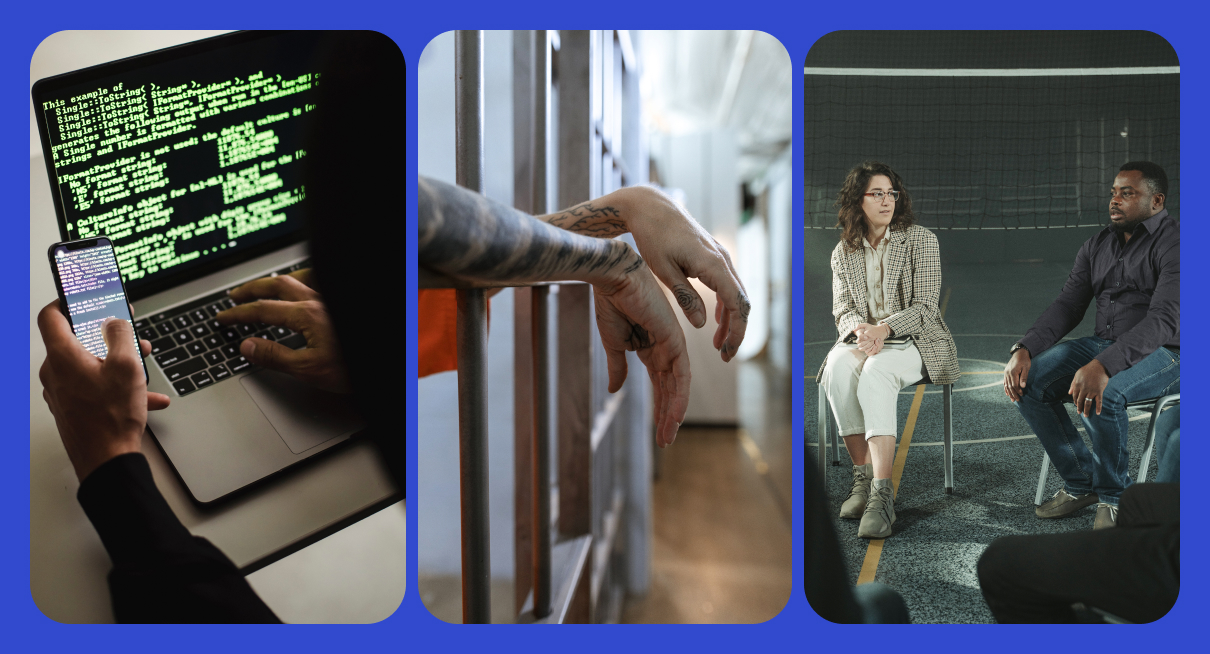The Role of AI in Criminal Justice Is Evolving. Here’s How

In the US today, over 200 million people are incarcerated. This is an increase of a massive 500% over the last 40 years. The latest statistics go on to show that two out of every three of those convicted will go on to re-offend and re-enter the criminal justice system within just three years. Recidivism is a significant problem, and current methodologies to prevent it remain relatively ineffective. But what if there was a solution? AI in criminal justice is fast becoming one of the most talked about potential variants. So, how does AI in the criminal justice system work, and how can it really be harnessed to prevent reoffending rates? Let’s take a look.
How Does the Current Criminal Justice System Work, And Why Is It a Problem?
Generally speaking, the effectiveness of any criminal justice system isn’t just how many convictions it makes in raw data. It’s something known as the recidivism rate. This statistic highlights how many of those who’ve passed through the criminal justice system go on to re-offend. A low number is considered a success. A higher rate indicates an issue.
Looking at the 2-3 years rates for numerous countries, we can see variations in recidivism throughout the world. For example:

So, what is the current criminal justice system, and why isn’t the current system working? On the whole, criminal justice, as it is practiced today, focuses primarily on a crime > conviction > incarceration (punishment) system. Although some alternatives have been explored, no singular effective system has been found to date.
Some scholars suggest that such problems occur due to several factors, including:
- Overcriminalization. With rising conviction rates in the last 40 years, there is an obvious trend in over-criminalizing activities. For example, critics of this often highlight the fact that in 2019 more people were arrested for marijuana than for violent crimes. This leads to inequality and discontent within the wider community.
- Faulty justice system. While the law may state ‘innocent until proven guilty, today’s courts are not always held before a jury of peers. Instead, ‘plea’ cases are becoming common due to the need to speed up courts and reduce costs. This is not always fair to the person standing trial.
- Lack of accountability. Creating the perfect storm. Often civilians believe that authority members (police, prosecutors, etc.) will not face repercussions for their actions and will not be held accountable. This makes people feel powerless and can lead to reckless behavior.
Considering what appears to be a loaded-dice system, it comes as little surprise that those who have had the misfortune to interact with the system often feel disenfranchised and unmotivated to alter their behavior.
Why Is Reducing Recidivism So Important?
The old phrase, ‘do the crime expect to do time,’ often rings clear, but punishment isn’t always effective in its current form and often can contribute to recidivism rates. But why is lowering these just so important?
- Society needs productive members. For a healthy, functional society, people need to contribute and participate. High recidivism rates in criminal sentencing indicate a reduction in the rates of functional society members.
- Incarceration is a costly business. US data shows the average cost of housing an inmate for one day is approximately $100. Over a 20-year sentence, this is approximately $730,000 (without inflation). The UK estimates the cost at around £44.6K per year or £123 per day, meaning it is costly to keep an inmate in prison. Imagine if this was a salary, not an expense.
- Crimes vary. Not all crimes are equal. Recidivism rates by crime vary, and so too should the responses to crimes. However, this is not always done fairly.
- Second chances should exist. Aside from the cost and productivity impacts, it’s essential to state the moral argument too. Almost everyone deserves a second chance, providing that they are unlikely to re-offend.
This is where smart AI criminal sentencing could come into play. In doing so, it could reduce rates of recidivism, increase successful outcomes and, on the whole, craft a more productive society.
How Could Use Cases of AI in Criminal Justice Prevent Crime?
It may seem a far jump between a criminal offense and a piece of data, but this chasm is not as vast as it might first appear. After all, Big Data and AI technology have long been used in many spheres, such as marketing (customer acquisition, etc.) and even finance (fraud detection), to predict and influence behavior. So why not use AI in the criminal justice system as well?
- Helps to reduce over-conviction. Bias is a major factor in human behavior, and no one is exempt. That said, the evidence shows that knowing about a bias helps reduce it. This is where smart AI for criminal sentencing could come in handy. By knowing the real stats, not biases, fairer sentences could be introduced, and recidivism could be reduced.
- Optimizes time spent in prison. How long should someone serve? What is an appropriate sentence given the unique characteristics of a crime? These are questions judges often face. And often, they may get it wrong. However, with the help of AI for criminal sentencing, judges could draw upon a wider range of data to pass down fairer sentences and avoid more time than necessary spent in prison. Much in a similar way to how AI and ML can calculate likelihood return rates on loans.
- Manages in-prison ‘events’. Often we hear about early releases for good behavior or extended sentences for poor behavior. But just how fair is this system, and does it actually improve or hurt recidivism rates? By monitoring and analyzing in-prison ‘events’ such as punishment cells, solitary confinement, etc. Guards could become more aware of current practices and improve them to get better results, such as higher rehabilitation rates.
Is AI a Perfect Solution, or Is There a Downside?
But, of course, these are just some of the ways AI could potentially be employed. As use cases of AI evolve, we’ll likely see additional variants added to the list, which go on to impact the recidivism rate. And on the flip side, it’s important to remember that AI is not a perfect tool. Over-reliance on technology could be just as harmful as ignoring the facts in favor of a gut feeling.
For example, although AI algorithms have proven effective, they can be impacted by various factors that make them less than ideal. This may mean a faulty algorithm, AI which lacks context, fairness issues, AI biases, etc., which can cause the tech to deliver less than optimal results.
This is why when it comes to implementation, it’s essential to have the right team on board who know how to implement AI, deal with data effectively, and monitor results/models to ensure they function correctly.
AI And Criminal Justice Wrap up
Although there may be no single correct answer when it comes to the criminal justice system, that doesn’t mean that the technology behind AI in criminal justice isn’t worth paying attention to. Tools, such as GiniMachine, are effective software solutions that draw upon mass amounts of data to deliver valuable and accurate insights, whether the stakes are as high as calculating a prison sentence or a loan’s repayment schedule.
Curious about AI and how it works? Sign in and start a free trial to build your first model with GiniMachine.



